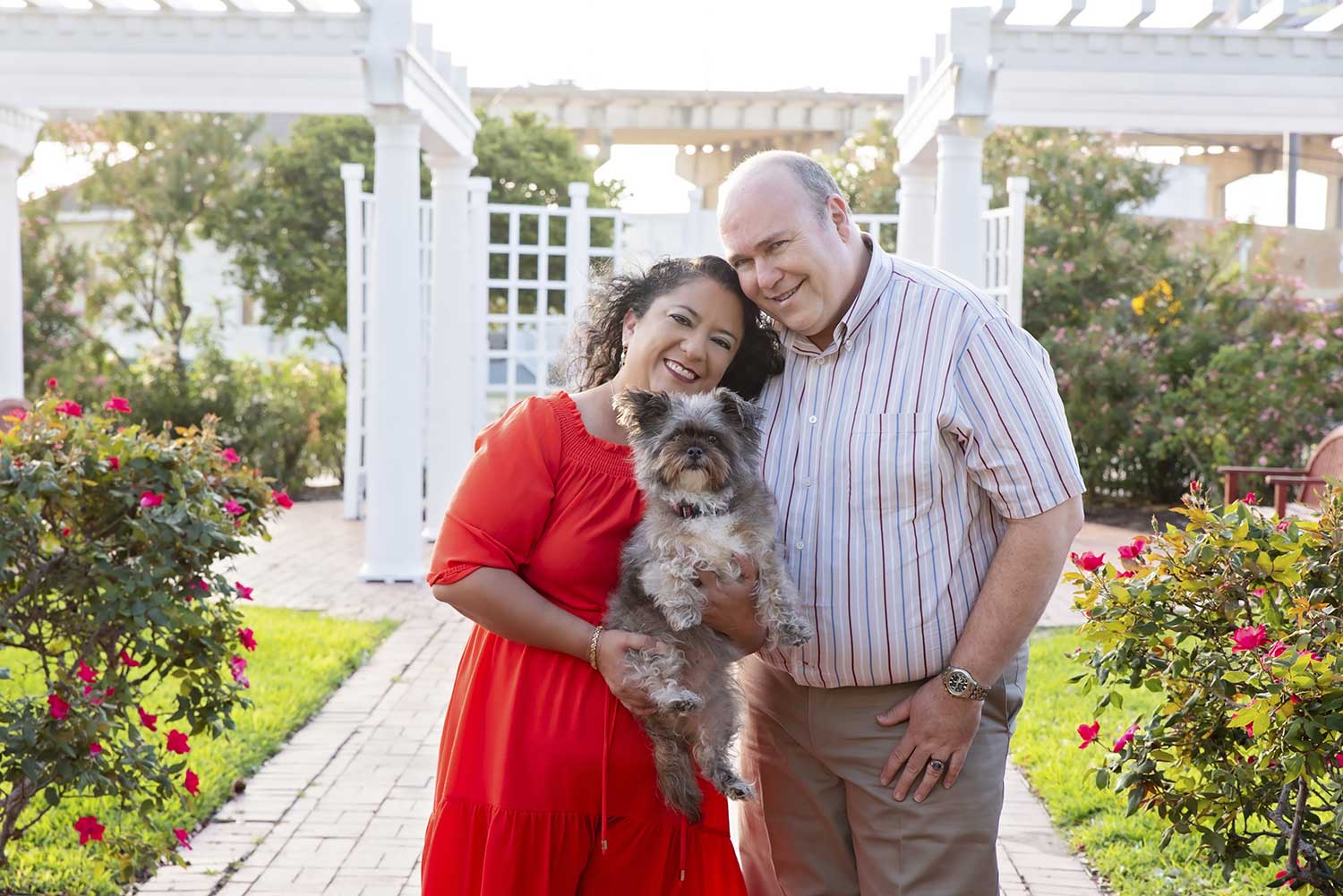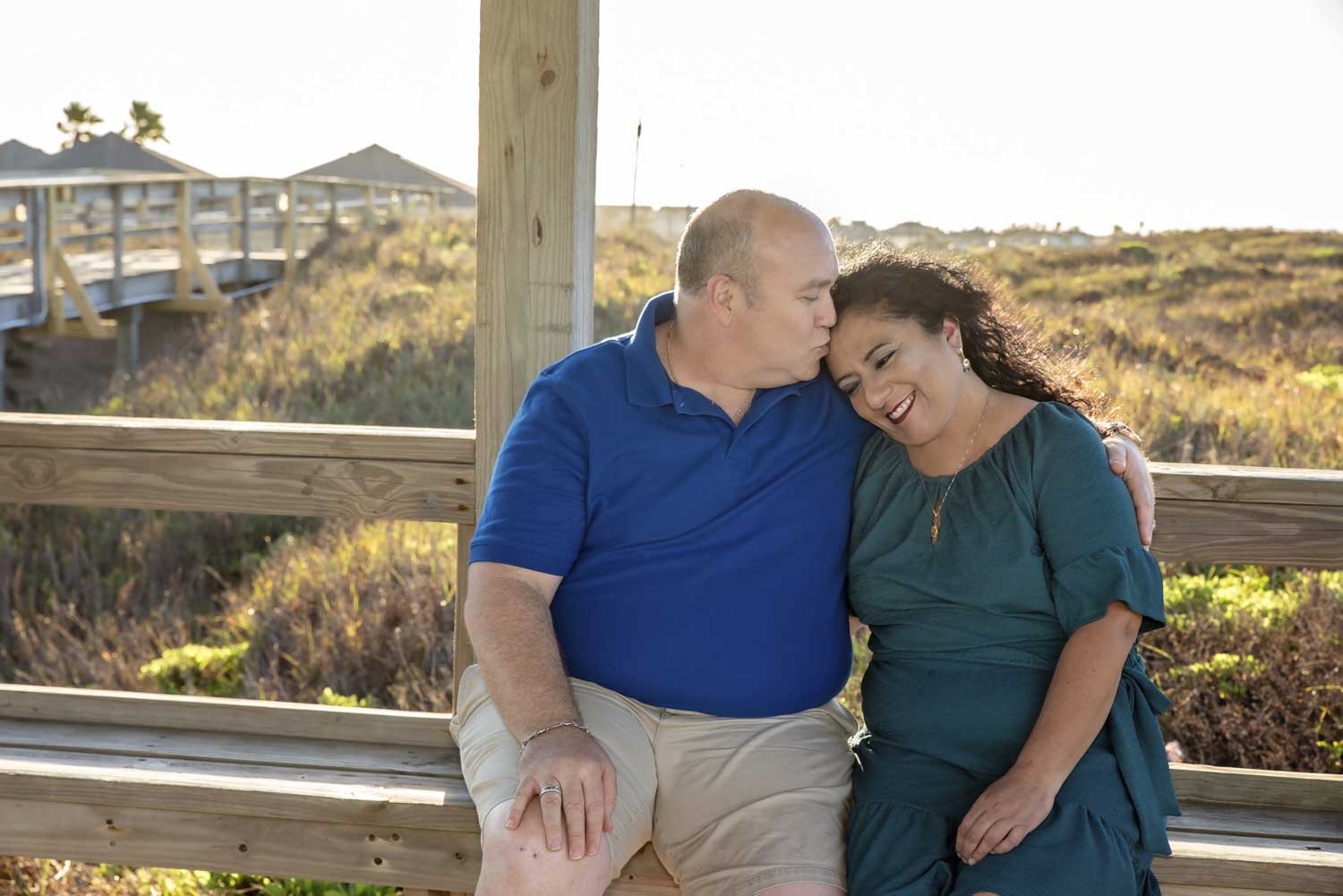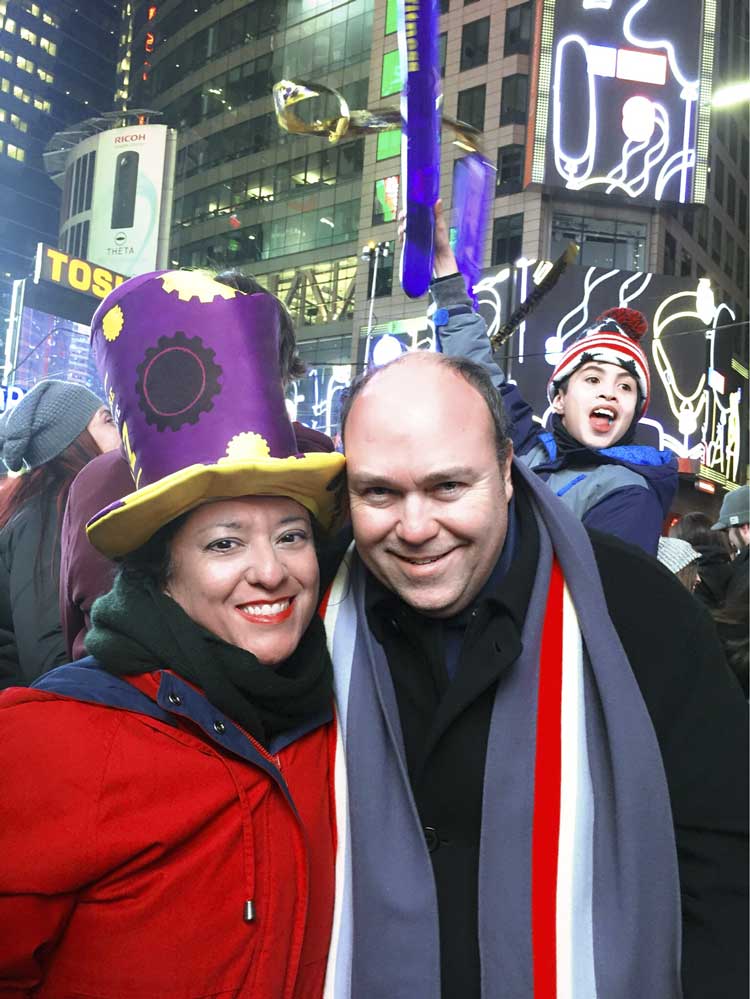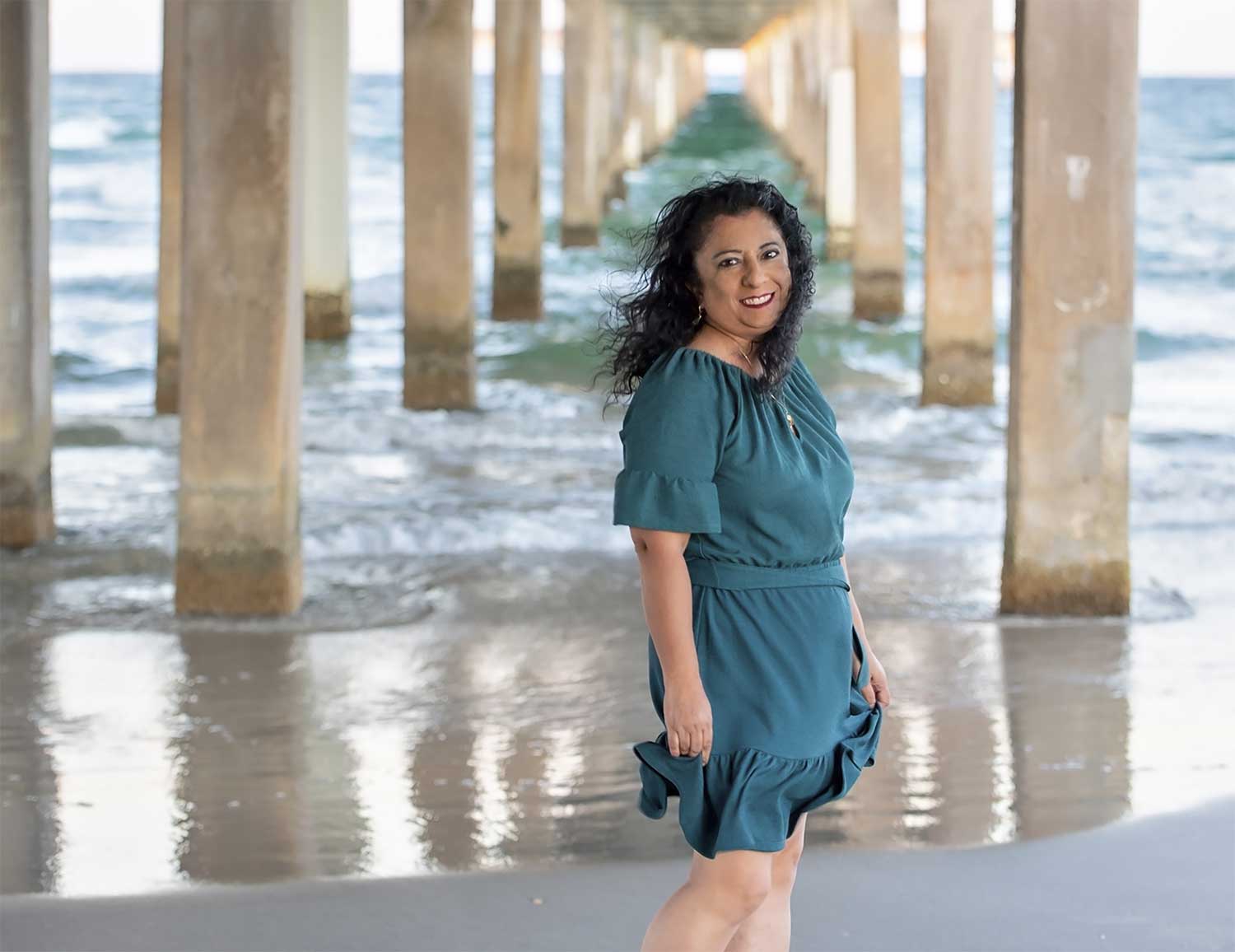REBECCA ESPARZA HAD BEEN LIVING in Washington, D.C., for just a few months when she started to feel sharp pains in her lower abdomen in August 2001. She had been feeling tired and sluggish for a while. Her back hurt. The normally active 30-year-old had started skipping her daily step aerobics classes and jogs. She felt bloated. “I looked four months pregnant, but I wasn’t,” she says.
Esparza went to the ER, only to be told she had nothing to be concerned about. She wasn’t convinced, so she decided to book a flight to her hometown of Corpus Christi, Texas, to see her longtime gynecologist. He had previously coordinated her care for two surgeries to remove uterine fibroids, which are benign tumors that can grow in the lining of the womb during a woman’s childbearing years. Esparza figured another uterine fibroid might have formed, but a look of alarm crossed her gynecologist’s face as he palpated Esparza’s lower abdomen at the appointment in late September. He felt a large mass. “I’m concerned, Rebecca,” she recalls him saying. “The only thing that grows this fast is cancer.”
A Rare Cancer
On Thanksgiving Day, Esparza had exploratory surgery to examine the mass and remove any cancerous tissue in and around the ovaries and throughout the abdominal cavity. Even at the time of her surgery, Esparza didn’t think she really had cancer. “I was convinced they were just going to go in and find another fibroid tumor. I was young and thought I knew everything. Only old ladies got ovarian cancer,” she says.
When Esparza woke up in the dark recovery room, she saw the outline of her parents holding each other at the foot of the bed. She could hear them crying. “Oh no, it’s definitely cancer,” Esparza thought. Then she shut her eyes and went back to sleep. “I didn’t want to deal with it.” When she awoke again, Esparza learned she had stage II ovarian cancer. Her surgeon removed her organs where the cancer had spread, including her ovaries, fallopian tubes and uterus. “I was shocked,” says Esparza, who was unable to process the emotions that came with the loss of her ability to bear children.
Esparza’s cancer was a rare type of ovarian cancer known as a germ cell tumor. While most ovarian cancers form in the epithelium, the outer tissue layer surrounding the ovary, germ cell ovarian cancer forms in specialized cells that grow to become eggs. About 2% to 3% of ovarian cancers are germ cell tumors, and they are typically diagnosed in teenagers and young women, unlike epithelial ovarian cancers, which are typically diagnosed in post-menopausal women. The five-year relative survival rate for all women with epithelial ovarian cancer is 47%, while women with ovarian germ cell tumors have a 93% five-year relative survival rate.
While Esparza recalls her doctor telling her this type of ovarian cancer had a good prognosis, she also remembers a social worker visiting her in the hospital and telling her to get her affairs in order and say goodbye to her family and friends. “I was so upset,” she recalls. “I thought, ‘Who are you to tell me I’m going to die?’”
Esparza’s partner, Robert Marraro, who was still in Washington, D.C., found out about the diagnosis on the phone. “I felt lonely, isolated by the physical distance between us,” he says.

Rebecca Esparza and Robert Marraro stand with their dog, Kiki, at Heritage Park in Corpus Christi, Texas. Photo by Padre Ryan Photo + Video
Without Health Insurance
Esparza’s next step in treatment would be chemotherapy, but she faced another problem. She had no health insurance. When she had quit her previous job to move to Washington, D.C., with Marraro earlier that summer, she had opted not to take COBRA continuation coverage, which would have extended her health insurance plan from her previous employer. At the time, she was working as a freelance marketing consultant. She explored paying for private health insurance coverage, but insurance companies would not cover her gynecologic care because her fibroids and endometriosis were considered pre-existing conditions. “I was 30. I didn’t think it was a big deal at the time,” she says.
After not having health insurance coverage for approximately eight months, Esparza was diagnosed with cancer. She cleaned out her savings to pay for her initial surgery. She wasn’t sure how she would pay for chemotherapy. “I didn’t know what to do or how to pay for treatment,” she says.

Rebecca Esparza and Robert Marraro share a moment on the beach. Photo by Padre Ryan Photo + Video
Esparza moved in with her parents after the surgery. It took two months after that, but she was able to enroll in a local program in her county that provided free health care services. When she went in for her next scan in January 2002, cancer was discovered in her liver and the lining of her stomach, which meant she had stage IV germ cell ovarian cancer.
Esparza started chemotherapy that same month. She received a cocktail of three drugs: bleomycin, etoposide and cisplatin, which can be highly effective, even for advanced germ cell ovarian tumors. The regimen involved three-week cycles of IV infusions. For the first two weeks of each cycle, Esparza would receive eight-hour infusions, five days a week. During the third “rest” week, she would receive a four-hour infusion. “It took every bit of life out of me,” says Esparza. “I couldn’t eat, couldn’t keep any food down, [and] became rail thin.”
She remembers being angry and afraid during those first months. A nurse at the chemotherapy center took her aside and told her to have faith that everything would work out. Esparza took her advice to heart. She shifted her perspective, leaned into her Catholic faith and tried to let go of the things she couldn’t control. During that time, she also relied on her father, Alfonso. “My dad was my hero. He helped me to laugh at myself instead of crying,” says Esparza.
In early April, after nearly four months of chemotherapy, Esparza received good news. A tumor marker in her blood, alpha-fetoprotein, had dropped significantly, a sign that the treatment was working. By the third week of May, scans showed a partial remission with a questionable mass on her liver. In September, that mass was determined to be scar tissue. Esparza was told she had no signs of cancer.
“I had honestly thought I was going to lose my life,” says Esparza. “When I found out I was in remission, I didn’t know what to do with myself anymore.”
Finding Her Way
Esparza thought about her future, which looked like nothing she had imagined. She grieved the loss of her ability to have children, and her health problems made it difficult for her to find work. She experienced intense hot flashes and mood swings brought on by premature menopause, in addition to side effects from her treatment, including joint pain in her hands and feet, numbness and tingling in her arms and legs, and intermittent vertigo. She fell into a deep depression that lasted over a year. “I would go to sleep every night to sad songs just so I could cry. I just wanted to sleep all day and feel sorry for myself,” Esparza says.
Her dad gave her some space and then intervened. “He told me I had been given a gift—that I had to go out there and use it,” says Esparza, whose father died in October 2010. At her father’s encouragement, she mustered the strength to enroll part time in business classes at University of the Incarnate Word in Corpus Christi in the spring of 2003. “Getting my MBA saved my sanity and made me feel alive again,” she says.
Esparza started a support group for cancer patients and survivors with Marraro, who had moved to Corpus Christi in July 2002. Some people who attended the support group, like Esparza at the time of her diagnosis, didn’t have health insurance. (About 1 in 4 Texans had no health insurance prior to passage and implementation of the Affordable Care Act. While there are fewer uninsured today, Texas remains the state with the highest uninsured rate in the U.S., at about 18% in 2018.) “There were people that came to the support group that didn’t qualify for insurance or aid,” says Esparza. “They were literally sitting at home waiting to die. I was really offended that in the richest country in the world, people didn’t have a way to get treatment.”
Esparza joined the American Cancer Society’s Cancer Action Network, which advocates for laws and policies to help support cancer research and people impacted by cancer. She began volunteering, making phone calls, and meeting with local, state and national legislators to share her story. She voiced her support of the Affordable Care Act, which became law in 2010 and made it illegal for most health insurance companies to deny coverage for medical conditions that patients had prior to signing up for insurance. She also advocated for provisions that required insurance companies to cover preventive health care services, such as screening mammograms, at no additional cost to the patient.
Over the past 15 years, Esparza has asked elected officials for increased federal funding for ovarian cancer research as a volunteer for the Ovarian Cancer Research Alliance. Recently, she was selected to serve as a patient advocate on the Gynecologic Cancers Steering Committee Ovarian Cancer Task Force, which helps set priorities and protocols for clinical trials funded through the National Cancer Institute.
Esparza remains dedicated to helping others. “She’s mad as hell,” Marraro says, half-joking. More seriously, he adds, “Her conviction and courage are extremely strong. She’s come to understand that she was left on this earth for a purpose. And that purpose is to give voice to those who can’t speak or who have already gone.”
Caregivers of people with cancer need mental health support.
Rebecca Esparza refers to her partner Robert Marraro as a caregiver extraordinaire. “I wouldn’t have made it this far into cancer survivorship without him,” says Esparza. Yet caregivers need support too. Early on in Esparza’s diagnosis, Marraro felt lonely, isolated and depressed. He isn’t alone. According to the Family Caregiver Alliance, 40% to 70% of family caregivers show signs of clinical depression.
Marraro sought therapy from a clinical psychiatrist and spiritual guidance from his church at various times during Esparza’s treatment and recovery. “There can be a stigma around seeking mental health help, but I realized this was bigger than something I could handle on my own,” he says.
The American Cancer Society’s Caregiver Resource Guide provides detailed steps that caregivers can take to protect their own health and well-being.
A Second Cancer
In 2008, Esparza was diagnosed with papillary thyroid cancer. She had surgery to remove her thyroid gland, two parathyroid glands and 45 lymph nodes.
While the surgery was successful, the doctor gave her bad news: Because she had been diagnosed with two different cancers before age 40, there was a much higher likelihood that she would get other cancers throughout the rest of her life. “I burst into tears when he said that. In some ways, it was an even bigger blow than the first cancer,” says Esparza, who describes the couple’s feelings of devastation.

Just months after her surgery, Esparza traveled to New York City with Marraro to see the ball drop on New Year’s Eve. Photo courtesy of Rebecca Esparza
There is always a sense of “waiting for the other shoe to drop,” says Marraro. When Esparza was having severe abdominal pain, bloating and other gastrointestinal issues in 2016, they feared the worst. It turned out the symptoms were the result of a blockage in her GI tract caused by scar tissue from her previous ovarian cancer surgery. The mass was squeezing shut her left ureter, the tube that carries urine from the kidney to the bladder. Esparza underwent a 12-hour surgery to remove the intricate network of scar tissue from her abdomen, but the blockage led to irreparable damage that caused her left kidney to shut down.
Marraro and Esparza try not to dwell on the things they can’t change, and instead choose to focus on each new day and challenge. Just three months after Esparza’s 2016 surgery, the couple had a front-row view of the ball dropping as they celebrated New Year’s Eve in New York City’s Times Square. “It was a bucket-list goal that wouldn’t have happened if not for the situation we were in,” Marraro says. It may not be the future Esparza envisioned so many years ago, but it’s the life she has built—using a foundation of giving to others.
“I want to make sure that other people can be helped by my experiences,” Esparza says. “If that happens, then I feel some consolation for the things I’ve suffered.”
Cancer Today magazine is free to cancer patients, survivors and caregivers who live in the U.S. Subscribe here to receive four issues per year.





